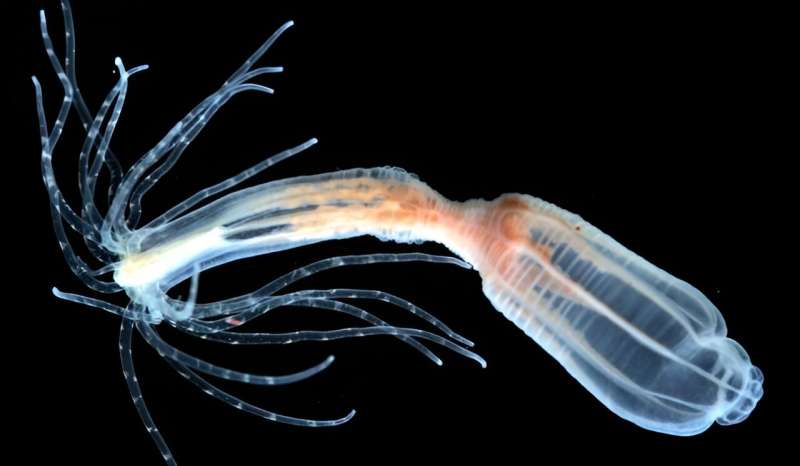This article has been reviewed according to Science X's editorial process and policies. Editors have highlighted the following attributes while ensuring the content's credibility:
fact-checked
peer-reviewed publication
trusted source
proofread
Study suggests brain regulatory program predates central nervous system evolution

New research from the Layden Lab at Lehigh has demonstrated that the gene mechanisms at work during neurogenesis in the brain actually predate the evolutionary development of the central nervous system. In other words, to build our brains, nature is borrowing the blueprints from much simpler creatures that predate us and other animals on the evolutionary timeline.
"Sea anemones are cnidarians, the sister taxon to bilaterians, which includes humans and most other animals," said Michael Layden, associate professor of biological sciences and director of the Layden Lab. "Our research demonstrates that these gene programs may have been inherited from the common ancestor of cnidarians and bilaterians, and may not have been specifically adapted for brain development."
The findings, published in Scientific Reports, were based on intensive research studying gene mechanisms in the primitive neural nets of Nematostella vectensis, also known as the starlet sea anemone.
It's a big advancement toward answering lingering questions about the development of the central nervous system in animals, including humans.
One of those lingering questions for scientists has been whether all brains are homologous, having descended from one common ancestor, or convergent, having developed independently in different animals by co-opting existing genes for this new use.
To work toward an answer, the Layden Lab looked at sea anemones to determine whether the same gene patterns that inform the development of the brain were present during the development of the anemones' simpler, non-brain neural net.
If found to be present, this finding would suggest that no new, distinctive function would have had to evolve to pattern the brain, an argument against the homologous theory.
Researchers first injected Nematostella embryos with mRNA at the single-cell stage to control the expression of genes of interest. They then assessed the changes in neuronal development using marker genes for different neuron types.
They found that the gene program involved in patterning the brain along the anterior-posterior axis was also responsible for patterning Nematostella's much simpler neural net. They also found that the genes in neural nets that are involved in regionalization—allocating cells to different regions of the nervous system—also function to regionalize all other kinds of cells as well. Thus, their roles are not restricted to patterning the brain.
This finding also supports the hypothesis that the central nervous system patterning evolved via the co-option of broadly acting regionalization programs that were present in an ancestor and can still be observed in many species today.
"At a minimum our findings reject the argument that conserved regionalization programs are sufficient to support the homology of bilaterian brains," Layden said. "Our findings support the co-option hypothesis because no novel function would need to evolve for axial programs to be independently co-opted."
The research is an example of how scientists look to other creatures to unlock understanding of ourselves. Layden's lab also studies the mechanisms at work in Nematostella during the separate but similar process of neural regeneration, or the regrowing or repairing of dead or damaged nerve cells.
He believes that establishing an understanding of these processes could help lay the groundwork for potential human applications, such as regenerative therapies.
Of course, evolution has led to extraordinary advancements in animals' fully developed central nervous systems over the primitive neural nets of cnidarians. The respective nervous systems of humans and cnidarians have evolved in very different ways to meet the very different needs of their respective species. But the basic blueprint remains the same.
"By investigating how these animals build their nervous systems, we can gain an understanding of the building blocks," Layden said. "If you don't know where you started, it's hard to know how you got where you are."
More information: Dylan Faltine-Gonzalez et al, The brain regulatory program predates central nervous system evolution, Scientific Reports (2023). DOI: 10.1038/s41598-023-35721-4
Journal information: Scientific Reports
Provided by Lehigh University





















